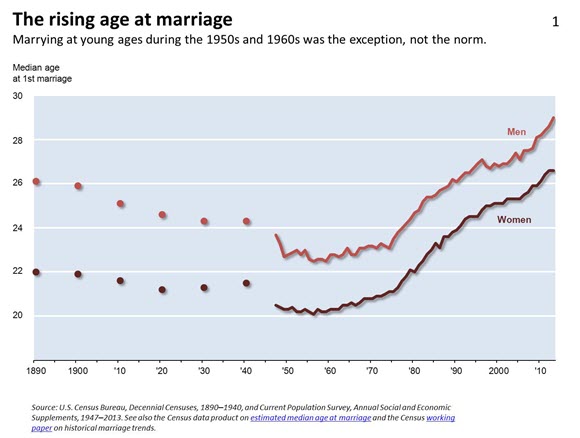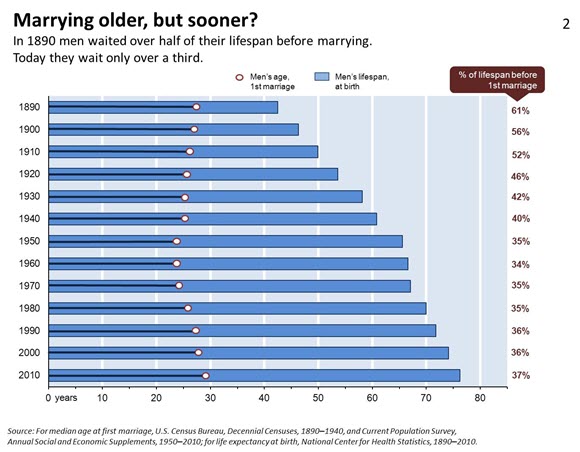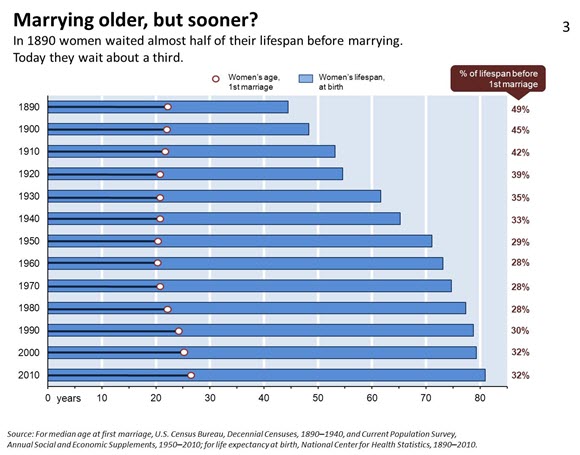
An official website of the United States government
Here’s how you know
Official websites use .gov
A .gov website belongs to an official government organization in the United States.
Secure .gov websites use HTTPS
A lock (
) or https:// means you’ve safely connected to the .gov website. Share sensitive information only on official, secure websites.
-
//
- Census.gov /
- Random Samplings /
- Marrying Older, But Sooner
Marrying Older, But Sooner
Marrying Older, But Sooner
Taking the long view
Although it is common to use the 1950s as a comparison period, doing so exaggerates how much the age at marriage has really risen (Figure 1). Looking at trends since 1890 reveals a U-shaped curve in which the 1950s and 1960s stand out as the exception for marriage, not the norm (estimates for these two decades are not significantly different from one another).
By the end of the 19th century, men married for the first time at 26 years old, three years later than they did in the decade following the Second World War. By 1900 their age at marriage began falling, and it took a full century before returning to its 1890 level. For women, it took 90 years (Figure 1). The idea then that our great-great-grandparents married when they were little older than teenagers is little more than myth.
Age at marriage has risen in tandem with life expectancy
By itself, the rising age at marriage toward the end of the 20th century looks startling. Since 1975 it has risen 6 years for men and women. Nonetheless this increase should not be surprising. Because we are living longer, we should expect to be marrying at older ages.
In 1890 the average lifespan for men was just 43 years, but they did not marry until 26 (Figure 2). In other words, they did not marry for the first time until well over half way through their lifetime (Figure 2). Today, men can expect to live to 76, yet they marry at 29, about one third of the way through their lifetime (Figure 2).
Viewed in this light, the gains to life expectancy during the 20th century dwarf increases in the age at marriage. What is more, calling the rising age at marriage a delay ignores life expectancy, which is not accounted for when we compare ages in absolute terms. Thus despite marrying at older ages, Americans are actually marrying sooner in their lifetime than they did a century ago.
Share
 Yes
Yes
 No
NoComments or suggestions?


Top




